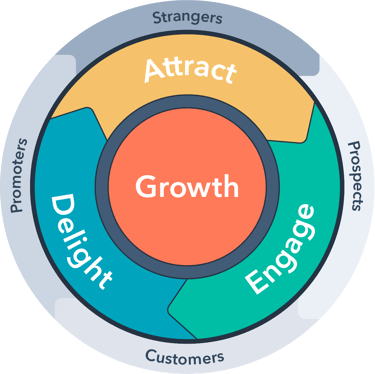HubSpot Implementation
Expert Implementation Best Practices and Comprehensive Checklist
What is HubSpot Implementation
HubSpot is a customer relationship management (CRM) platform that provides a range of tools and features to help businesses manage and grow their customer relationships. It offers a variety of tools including marketing, sales, customer service, and customer relationship management (CRM) tools.
Implementing HubSpot in your business can involve a number of steps, depending on the specific needs and goals of your organization. Here are some general steps that you might follow when implementing HubSpot:
-
Identify your business goals: Determine what you want to achieve with HubSpot, such as increasing lead generation, improving customer retention, or streamlining your sales process.
-
Set up your account: Sign up for a HubSpot account and set up your basic account settings, including your company name, email, and time zone.
-
Import your data: If you already have data in another CRM or marketing automation platform, you can import this data into HubSpot. This will help you get started quickly and avoid having to enter all of your data manually.
-
Integrate with your other tools: HubSpot integrates with a wide range of tools and platforms, such as email marketing software, social media, and web analytics tools. Consider which integrations will be most valuable for your business and set them up.
-
Customize your HubSpot portal: Use HubSpot's customization options to tailor the platform to your business needs. This might include creating custom properties, setting up custom reports, or customizing the look and feel of your HubSpot portal.
-
Set up your marketing, sales, and customer service processes: Use the tools and features in HubSpot to set up your marketing, sales, and customer service processes. This might involve setting up workflows, creating lead forms, or setting up chatbots.
-
Train your team: Make sure your team is trained on how to use HubSpot and take advantage of its features. This might involve providing training sessions or documentation or assigning a HubSpot champion to help team members get up to speed.
Implementing HubSpot can be a complex process, but it can also bring many benefits to your business. By following these steps and working with a HubSpot partner or consultant, you can successfully implement HubSpot and start seeing the benefits for your business.
What is the difference between HubSpot onboarding and HubSpot implementation?
HubSpot onboarding is the process of introducing new users to the HubSpot platform and helping them get started with using the various tools and features. This typically involves providing training and support to help users understand how to use the platform effectively, as well as helping them set up their accounts and configure their settings.
HubSpot implementation, on the other hand, refers to the process of integrating the HubSpot platform with a company's existing systems and processes. This might involve integrating HubSpot with a company's CRM, email marketing systems, or other tools and platforms. Implementation can also involve customizing and configuring the HubSpot platform to meet the specific needs of a business, such as by setting up custom workflows or integrations with other systems.
In general, onboarding is focused on helping individual users get up to speed with the HubSpot platform, while implementation is focused on integrating the platform with a company's existing systems and processes.